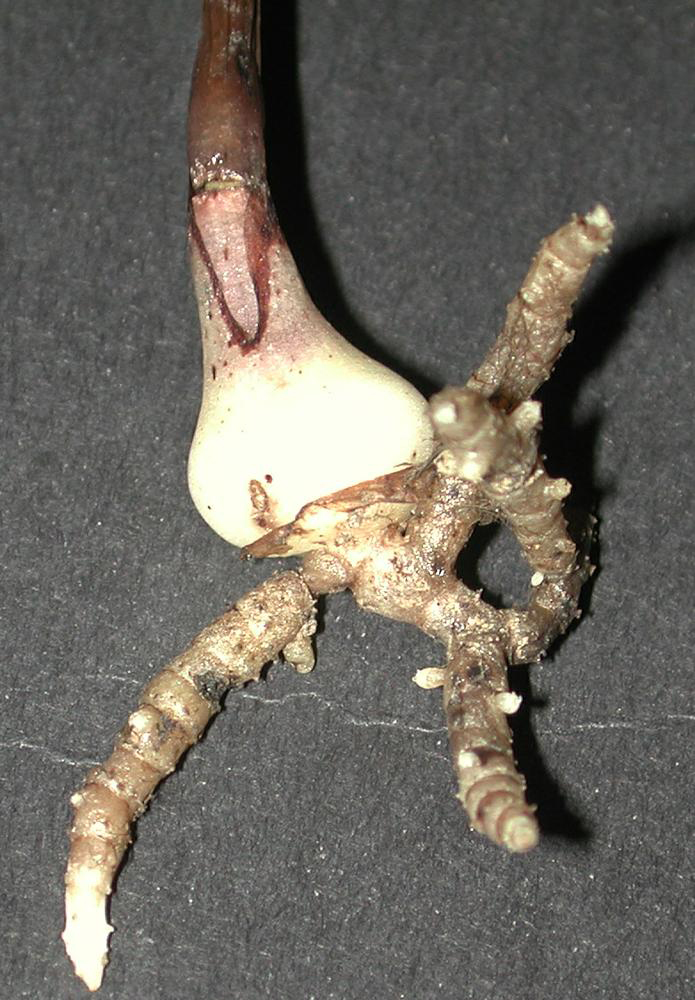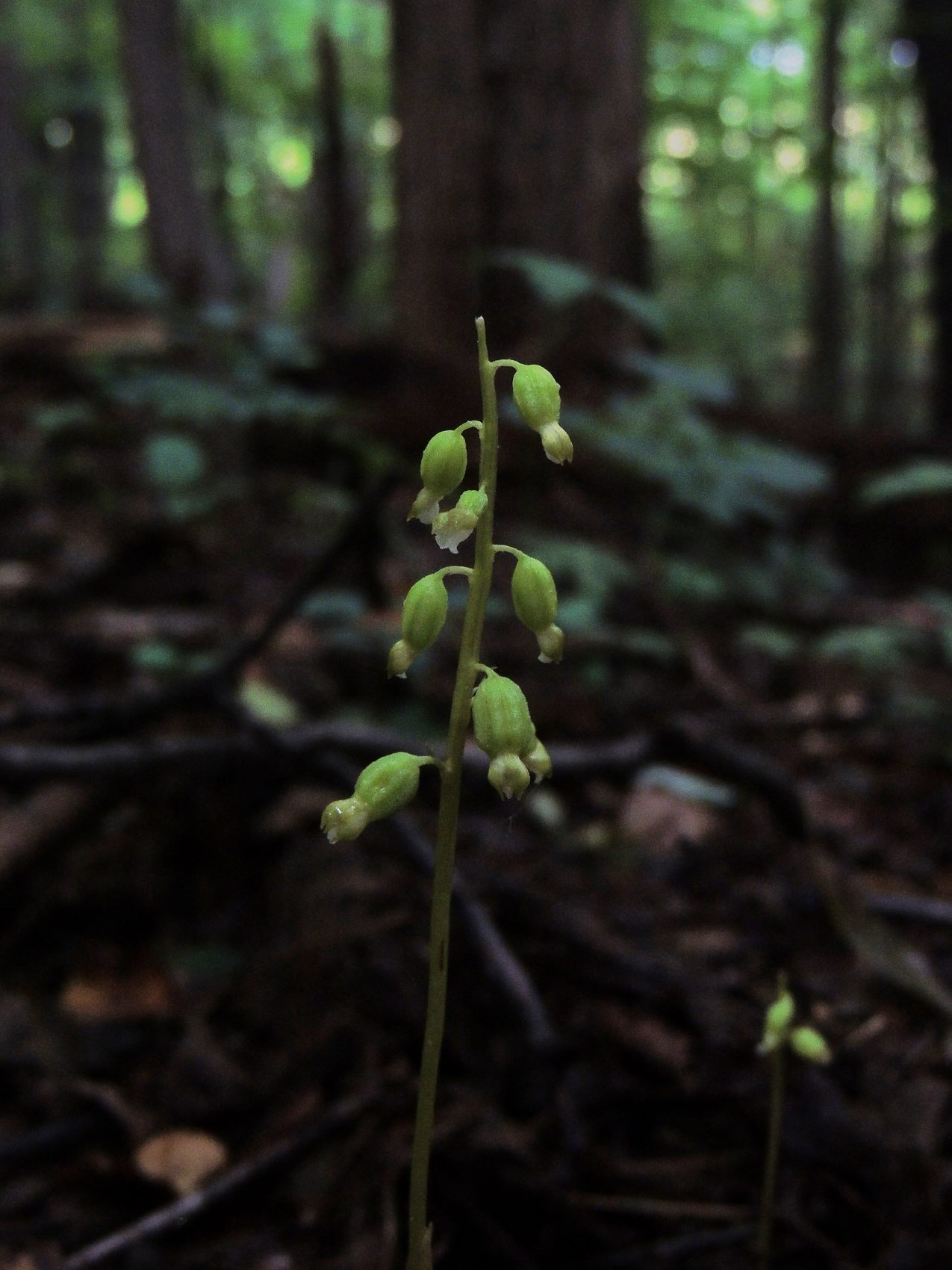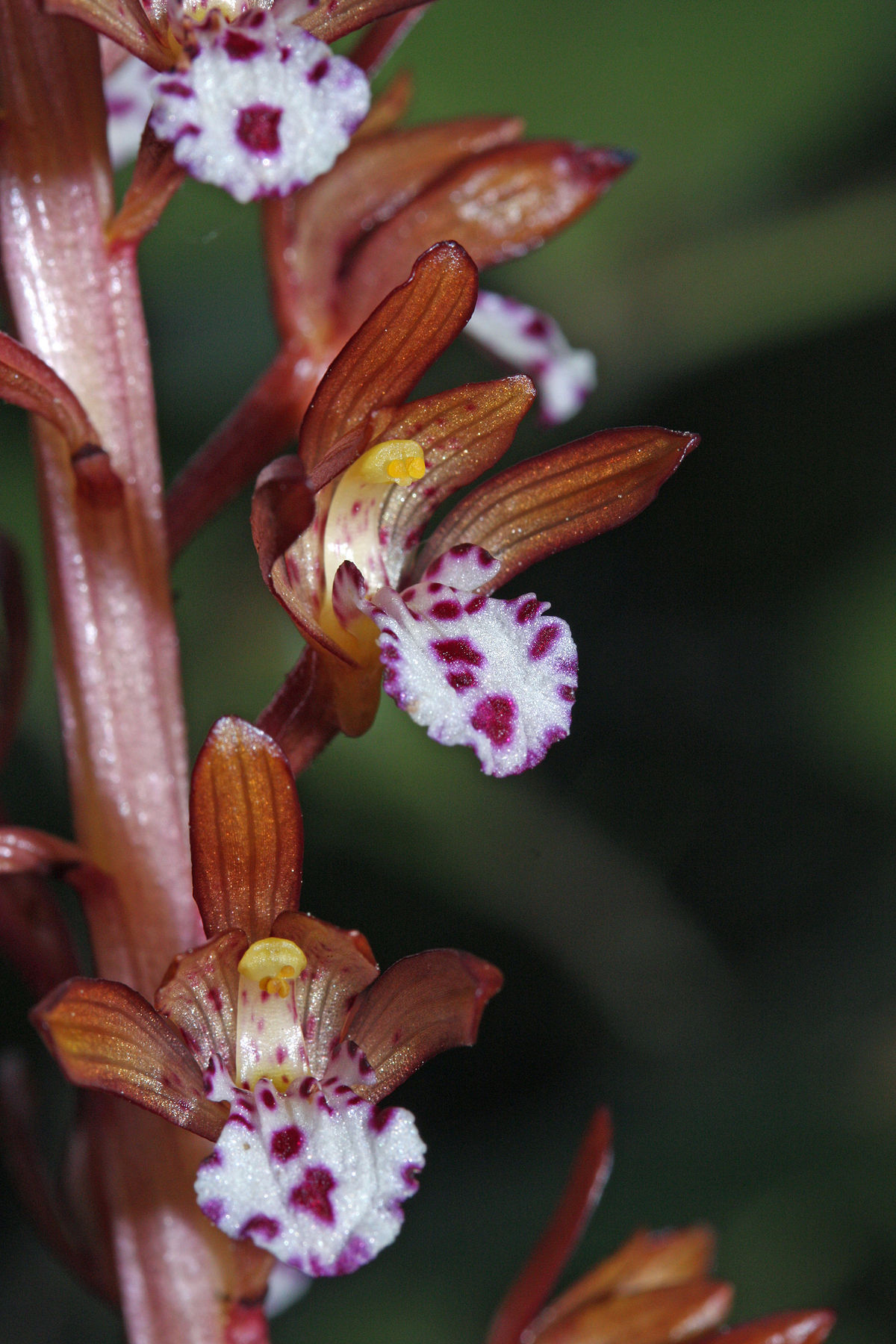| Coral Root Quick Facts | |
|---|---|
| Name: | Coral Root |
| Scientific Name: | Corallorhiza odontorhiza |
| Origin | United States, found from Maine to Florida, and in Canada |
| Shapes | Large oblong capsule |
| Taste | Mucilaginous slightly bitter, astringent |
| Name | Coral Root |
|---|---|
| Scientific Name | Corallorhiza odontorhiza |
| Native | United States, found from Maine to Florida, and in Canada |
| Common/English Name | Dragon’s Claw, Coral Root, Chickentoe, Autumn Coralroot, Fall coral-root, Small-flowered coral-root, Chickentoes, Crawley, Crawley root, Fever root, Coral, Scaly dragon’s claw and Turkey claw |
| Name in Other Languages | English: Autumn coralroot, Late coralroot |
| Plant Size | 10 to 30 centimeters |
| Root | Small, dark brown |
| Flowering Season | August to October |
| Flower | Brownish-green |
| Fruit shape & size | Large oblong capsule |
| Fruit Taste | Mucilaginous slightly bitter, astringent |
| Medicinal part | Root |
The plant is a native of the United States, found from Maine to Florida, and in Canada. The entire plant is destitute of verdure. The Herbalist, J. E. Meyers, says the entire plant is used for medical purposes. Its scarcity and high price have prevented its general use.
Medicinal uses
- It is effective for nightsweats, cramps acute erysipelas and hectic fevers.
- It promotes perspiration without producing excitement in the system. So it is effective for typhus fever, pleurisy and inflammatory diseases.
- It has diaphoretic, sedative, tonic and febrifuge properties without making the patient weaken.
- Use the plant infusion as a lotion for treating ringworm and skin diseases.
- The plant infusion is used for treating colds.
- Stalk decoction is used to build up the blood of people with pneumonia.
Uses
Crawley is recognized as the most powerful, prompt and certain diaphoretic in the “Materia Medica”; its chief value is as a diaphoretic in fevers, especially in typhus and inflammatory low stages of diseases, and may be relied upon in all cases to bring on free perspiration without increasing the heat of the system, or accelerated action of the heart. It has proven effective in acute erysipelas, cramps, flatulence, pleurisy, and night sweats, it relieves hectic fever without debilitating the patient. Combined with Leptandra virginica (Black root) or Podophyllum peltatum (Mandrake) when it is found necessary to act upon the bowels or liver, and mixed with Dioscorea (Wild yam root) it will be found almost a specific in flatulent and bilious colic. Combined with Caulophyllum (Blue cohosh) it forms an excellent agent in amenorrhoea and dysmenorrhoea or scanty or painful menstruation and is unsurpassed in after-pains, suppression of Lochia, and the febrile symptoms which sometimes occur at the parturient period.
From 20–30 grains of the powdered root given in water as warm as the patient can drink (when in bad) and repeated every 1½–2 hr., according to circumstances.
Steep 1 teaspoonful of the root in 1 cup of boiling water for ½ hr. When cold (if ambulent) drink 1 or 2 cupfuls a day a good mouthful at a time. Crawley is recognized as the fever powder by some practitioners; should be kept well closed, away from light.
Precautions
- Pregnancy and breastfeeding women should not use Coral root.
- Seek for immediate medical attention if experienced side effects.
References:
https://www.itis.gov/servlet/SingleRpt/SingleRpt?search_topic=TSN&search_value=894652#null
https://pfaf.org/user/Plant.aspx?LatinName=Corallorhiza+odontorhiza
https://botanical.com/botanical/mgmh/c/crawl116.html
https://en.wikipedia.org/wiki/Corallorhiza_odontorhiza
https://pfaf.org/user/Plant.aspx?LatinName=Corallorhiza+maculata
https://plants.usda.gov/core/profile?symbol=COOD7
http://vitaminsupplementsinfo.com/supplement-coral-root-corallorhiza/





